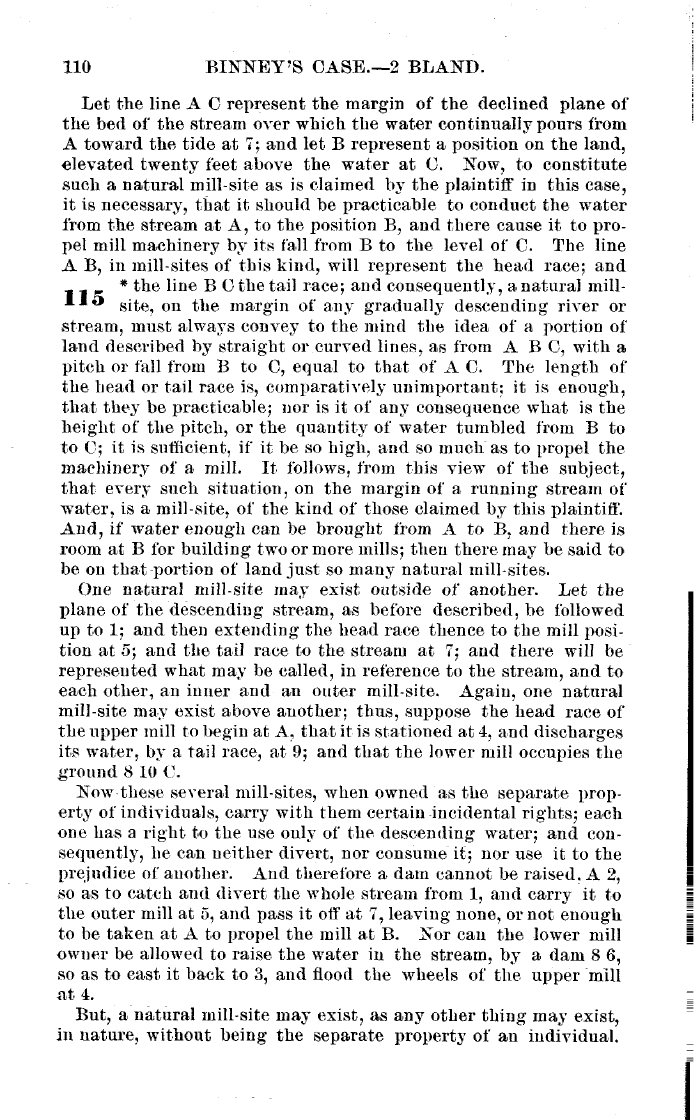|
110 BINNEY'S CASE.-2 BLAND.
Let the line A C represent the margin of the declined plane of
the bed of the stream over which the water continually pours from
A toward the tide at T; and let B represent a position on the land,
elevated twenty feet above the water at C. Now, to constitute
such a natural mill-site as is claimed by the plaintiff in this case,
it is necessary, that it should be practicable to conduct the water
from the stream at A, to the position B, and there cause it to pro-
pel mill machinery by its fall from B to the level of C. The line
A B, in mill-sites of this kind, will represent the head race; and
* the line B C the tail race; and consequently, a. natural mill-
site, on the margin of any gradually descending river or
stream, must always convey to the mind the idea of a portion of
land described by straight or curved lines, as from A B C, with a
pitch or fall from B to C, equal to that of A C. The length of
the head or tail race is, comparatively unimportant; it is enough,
that they be practicable; nor is it of any consequence what is the
height of the pitch, or the quantity of water tumbled from B to
to C; it is sufficient, if it be so high, and so much as to propel the
machinery of a mill. It follows, from this view of the subject,
that every such situation, on the margin of a. running stream of
water, is a mill-site, of the kind of those claimed by this plaintiff.
And, if water enough can be brought from A to B, and there is
room at B for building two or more mills; then there. may be said to
be on that-portion of land just so many natural mill-sites.
One natural -mill-site may exist outside of another. Let the
plane of the descending stream, as before described, be followed
up to 1; and then extending the head race thence to the mill posi-
tion at 5; and the tail race to the stream at r; and there will be
represented what may be called, in reference to the stream, and to
each other, an inner and stn outer mill-site. Again, one natural
mill-site may exist above another; thus, suppose the head race of
the upper mill to begin at A, that it is stationed at 4, and discharges
its water, by a tail race, at 9; and that the lower mill occupies the
ground 8 10 C.
Now these several mill-sites, when owned as the separate prop-
erty of individuals, carry with them certain-incidental rights; each
one has a right to the use only of the descending water; and con-
sequently, lie can neither divert, nor consume it; nor use it to the
prejudice of another. And therefore a dam cannot be raised. A 2,
so as to catch and divert the whole stream from 1, and carry it to
the outer mill at i;, and pass it off' at i , leaving none, or not enough
to be taken at A to propel the mill at B. Nor can the lower mill _
owner be allowed to raise the water in the stream, by a dam 8 6,
so as to cast it back to 3, and flood the wheels of the, upper -mill
at 4. -
But, a natural mill-site may exist, as any other thing may exist,
in nature, without being the separate property of an individual.
|

